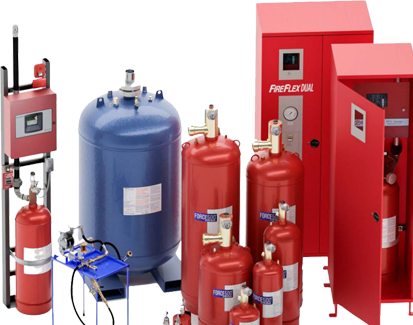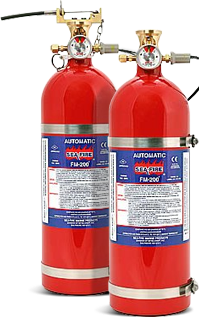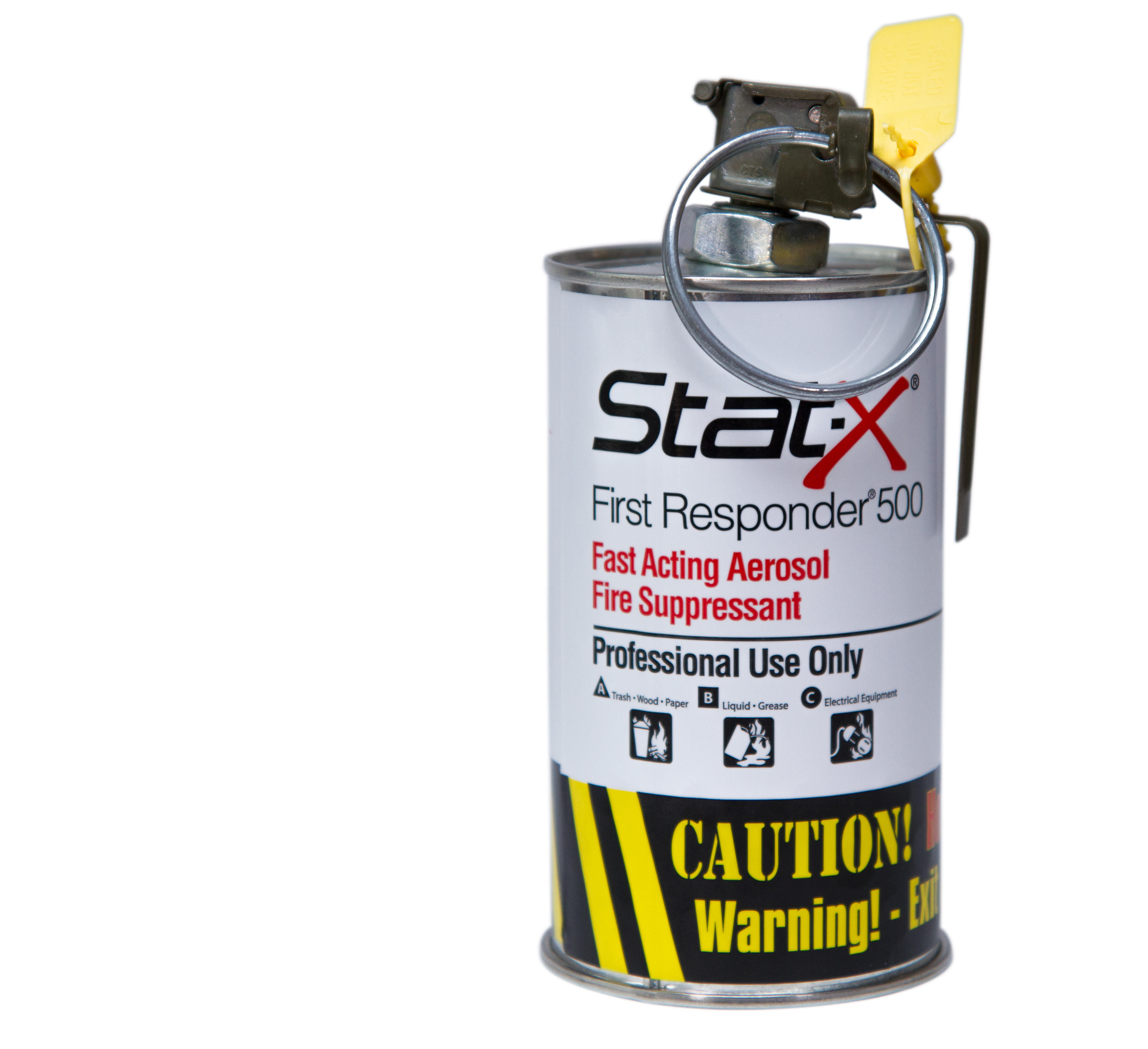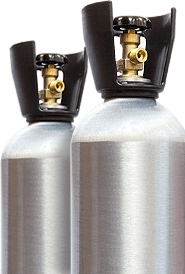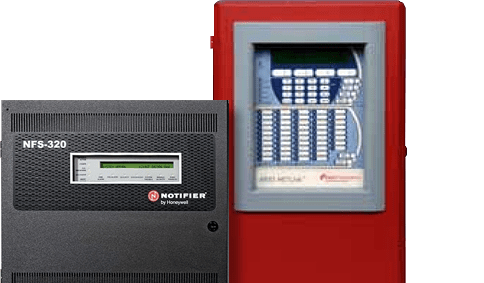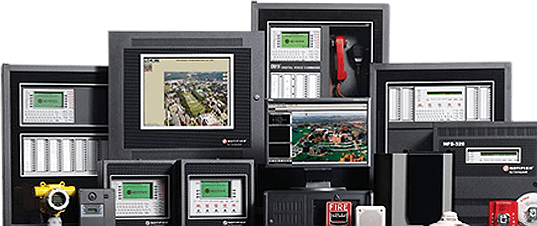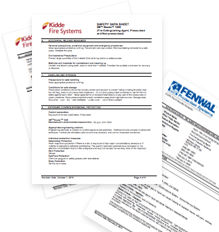Fire Suppression for Cold Storage and Food Processing Facilities: Why Natura Inert Gas Systems Lead

Cold storage and refrigeration units are the backbone of modern food logistics, ensuring product integrity and safety across the supply chain. Yet, fire safety in these facilities presents unique challenges that traditional suppression systems struggle to address. The low temperatures, specialized insulation, and constant equipment use create environments where conventional methods like sprinklers are often ineffective or even harmful. In 2025, inert gas clean agent systems — such as the Kidde Natura Inert Gas Fire Suppression System — have emerged as the most reliable, efficient, and business-friendly solution for protecting cold storage and food processing operations.
Fire Risks in Cold Storage and Food Processing Facilities
Unique Environmental and Operational Hazards
Cold storage environments are highly vulnerable to fires due to the combination of dense foam insulation, flammable refrigerants like ammonia, and round-the-clock machinery operation. Staffed facilities with heavy electrical loads increase the risk of ignition, while the low humidity and controlled atmosphere can allow fires to spread in unexpected ways. Unlike standard commercial spaces, these facilities demand fire suppression strategies that neutralize flames without introducing additional risks such as water damage or spoilage.
Explore further
Common Fire Scenarios and Root Causes
Electrical faults in compressors, controllers, and freezing units remain the leading ignition sources. Highly flammable coolants, combined with insulation materials, significantly increase the fire load even in small spaces. Ironically, machinery designed to keep spaces cold often overheats, creating further risk. In such high-stakes environments, the suppression method chosen must eliminate fires quickly and cleanly — without jeopardizing stored goods.
Code Compliance and Insurance Requirements in 2025
Regulatory Updates for Clean Environments
The NFPA continues to evolve its standards to reflect the realities of cold storage fire safety. While NFPA 13 (sprinklers) remains widely recognized, operators in 2025 are increasingly advised to consider NFPA 2001 (clean agent systems) as the benchmark for compliance. Inert gas solutions like Natura are acknowledged for their ability to suppress fires without freezing risks or contamination concerns.
Insurance carriers, too, are driving this shift. More providers now recommend or require inert gas clean agent systems for cold storage facilities, citing their superior ability to preserve inventory and minimize business interruption. For food facilities, this approach aligns not only with fire safety codes but also with food safety regulations — ensuring compliance on multiple fronts.
Third-Party Audits and Inspections
Insurance audits increasingly demand rigorous testing of suppression systems. In sub-zero environments, sprinklers and water-based systems are prone to failure, leading to costly penalties or lost coverage. Inert gas systems like Natura, however, maintain consistent performance regardless of temperature, helping businesses pass inspections more reliably and avoid financial setbacks.
Why Traditional Water-Based Systems Fall Short
Sprinklers have long been a default solution, but in cold storage they pose more problems than they solve. Water in pipes can freeze, crack infrastructure, and fail when needed most. Even if discharge occurs, water exposure can spoil food products and damage packaging, leading to devastating inventory losses. Additionally, high-density racking makes it difficult for sprinkler heads to penetrate storage areas effectively, allowing fire to spread unchecked.
These limitations make sprinklers a poor standalone option for food processing and refrigerated facilities. The risks of freezing and product contamination have pushed forward the adoption of clean agent systems as a smarter, safer alternative.
Sprinklers vs. Natura: A Direct Comparison
| Criteria | Sprinklers | Natura Inert Gas (IG-541) |
|---|---|---|
| Performance in sub-zero temps | Pipes freeze, high failure risk | Works reliably at -40 °C and below |
| Impact on inventory | Water causes spoilage, packaging damage | No residue, safe for food and packaging |
| Regulatory compliance | NFPA 13 | NFPA 2001 (preferred for cold storage) |
| Insurance perspective | High risk of claims, higher premiums | Lower risk profile, premium incentives |
| Recovery after discharge | Days to weeks of downtime | Often <24 hours |
People also search
Real-World Example
In 2024, a North American frozen food distributor experienced a fire in a compressor room. The existing sprinkler system failed due to frozen piping, resulting in over $2 million in spoiled inventory . In contrast, a similar facility outfitted with a Natura IG-541 system was able to suppress a machinery fire in under 60 seconds, with zero product loss and operations restored within 12 hours.
Why Natura Inert Gas Systems Are the Superior Choice
Advantages of Natura IG-541
The Kidde Natura Inert Gas Fire Suppression System is specifically engineered to address the challenges of environments like cold storage and food processing. Natura works by reducing the oxygen concentration in the protected space, suppressing combustion without leaving residue or causing damage to sensitive inventory.
Key benefits of Natura include:
- No freezing risks – consistent performance in sub-zero environments.
- Complete product protection – no water or chemical residue that could spoil food stock.
- Regulatory compliance – fully aligned with NFPA 2001 and insurance mandates.
- Sustainability – composed of naturally occurring gases (nitrogen, argon, carbon dioxide) with zero ozone depletion potential and no global warming impact.
- Operational continuity – facilities can return to service quickly after discharge.
Numbers That Matter
- Suppression speed : Natura reduces oxygen concentration to ~12.5% within 60 seconds — enough to stop combustion without harming stored goods.
- Downtime savings : Facilities using clean agents report up to 70% faster recovery compared to water-based suppression.
- Insurance benefits : Some carriers now offer premium reductions of 20–30% for cold storage sites protected with inert gas systems.
Next-Generation Fire Suppression Solutions in 2025
Hybrid and Intelligent Approaches
The leading trend in 2025 is hybrid design — pairing inert gas systems like Natura with advanced detection technologies. IoT-enabled sensors, heat cables, and early-warning detectors allow fires to be identified at their earliest stage. When coupled with Natura's rapid discharge, this provides near-instant suppression with minimal downtime and product loss.
Integration with Facility Operations and Safety Protocols
Modern suppression strategies go beyond extinguishing flames. They integrate seamlessly with:
- Ventilation and ammonia detection systems to handle refrigerant leaks.
- Temperature and atmosphere monitoring for safe and efficient activation.
- Emergency evacuation protocols to protect staff.
Routine inspections, staff training, and coordination with local fire departments complete a layered approach, making Natura-based systems the most resilient and future-ready fire protection strategy for cold storage in 2025.
Final Recommendations & Action Steps
Cold storage fire safety in 2025 requires moving beyond outdated, water-based suppression. Natura inert gas clean agent systems provide the only comprehensive solution capable of addressing the unique risks of refrigeration facilities while protecting food products, machinery, and staff.
To safeguard your business:
- Partner with specialists in inert gas fire protection.
- Stay current with NFPA updates and insurance mandates.
- Integrate suppression with monitoring, ventilation, and safety protocols.
- Conduct regular inspections and staff training to ensure readiness.
Cold storage is one of the most challenging environments for fire safety — but also one of the most critical. By investing in Natura Inert Gas Fire Suppression, you ensure compliance, protect valuable inventory, and secure the future of your operations.





